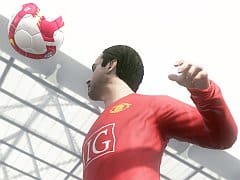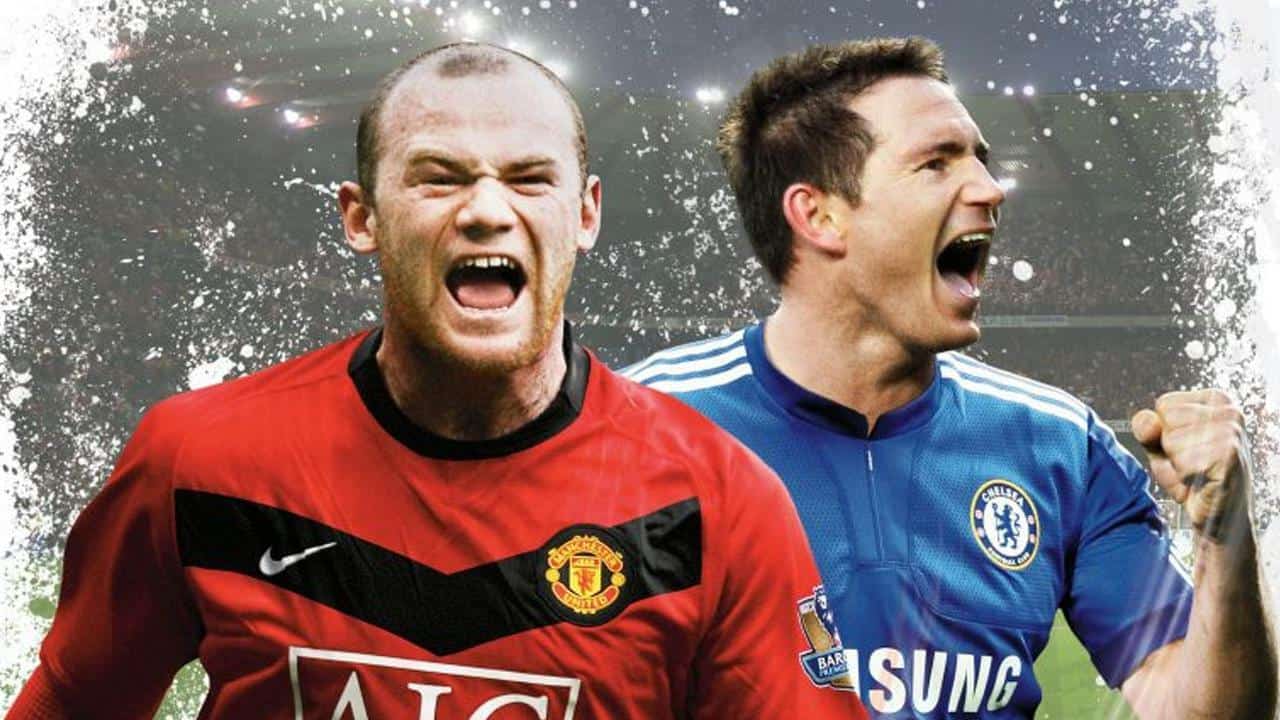You can trust VideoGamer. Our team of gaming experts spend hours testing and reviewing the latest games, to ensure you're reading the most comprehensive guide possible. Rest assured, all imagery and advice is unique and original. Check out how we test and review games here
“Chip shots are cheating,” bellows FIFA line producer David Rutter. It’s a disclaimer of sorts – in the build of FIFA 10 we’re playing at EA’s Guildford HQ, goalkeepers rush out aggressively – just one of the many improvements the Vancouver development team has made for this year’s game. Unfortunately, what’s not in this build is goalkeeper backtracking. As Chelsea powerhouse Didier Drogba bears down on the Arsenal goal, Spanish (or is he English now?) keeper Manuel Almunia rushes out to greet him. We chip shot, just to see what happens. It’s a feeble, slow effort. Almunia is frozen, however, – transfixed by our brilliance. We score. Rutter’s right – chip shots are cheating.
You won’t be able to do that in the final game, of course. In the final game, Rutter assures, goalkeepers will be much improved. They’ll be more aggressive on one-on-ones (faking round the keeper will be essential for scoring), they’ll realistically tip crosses for corners, and they’ll dramatically rush back to their own goal line and dive and scoop chip shots and rebounds off the line before they trickle over. Still, this fun little experiment has shone a light on EA’s entire design philosophy for FIFA 10: the devil’s in the detail.
FIFA 10 is the fourth iteration of the “next-gen” gameplay engine that last year produced what we described as the best FIFA game ever made: FIFA 09. That gameplay engine has, let’s be frank, shown Konami’s PES up. You might think last year was a good year to stop – retire undefeated, triumphantly hang up your boots… or something. Well, this is EA, remember. Another year, another sports game update. No rest for the wicked.
The wicked, in this case, is Rutter and co. And we’re back to the devil in the detail design philosophy. FIFA 10 will be no revolution – it will be a refinement. It will improve upon FIFA 09 in almost every department. He admits it’s becoming increasingly difficult to “fix” some of the identified issues. It’s the little things that count because, well, that’s about as much as you can do at this point. We’re approaching, it seems, the peak of FIFA’s powers.
So, what exactly are the little things? Rutter goes through them – contextual knockdowns, in air knockdowns, ball avoidance, blocks, reflex traps and increased effort in defence and attack. When players are under less pressure they will go for the easiest trap. Defending is more useful and based on timing. Players will trap the ball to intercept passes. Players will jump out of the way of a pass that’s not intended for them. John Terry now throws himself into blocks, as he does in real life – the proverbial kitchen sink. A tough, physical player is more engaging – jostling for the ball lasts longer. Drogba will knock down long balls for Lampard to smash in from 20 yards. Every tweak is a response to feedback based on the staggering 275 million online games of FIFA 09 that have so far been played – the little things.
But are they all little things? For many hardcore FIFA fans one gameplay change in particular will almost revolutionise the experience – the fixing of lofted through balls. If FIFA 09 had a flaw, it was that players were able to send lofted through balls to forwards for easy one on one situations, as pushed high up the pitch defenders left acres of space in behind them. It was an almost guaranteed goal – overpowered in every sense, to the degree that the technique is often banned in online matches.
So, here comes the fix. There will be more error on lofted through balls. Defenders will hang back in an attempt to prevent them. If John Terry, for example, goes up for a corner, Michael Essien will hang back as insurance. If you do find your defence infiltrated, the new and improved keepers will hopefully bail you out.
Despite our emphasis that FIFA 10 is all about the little things, Rutter reckons the game does innovate, and it comes in the form of 360 degree dribbling. This, he says, is a first for a football game. The end result is a more fluid and responsive feel. Dribbling is like an accessible skill move in of itself – press and hold LB to micromanage the dribble, get round the defender then sprint off over the horizon.
There is an important distinction to make here between FIFA’s current gameplay engine and FIFA’s current graphics engine. It’s the gameplay engine that’s four years old, not the graphics engine. On the graphics front, the Vancouver team is easier able to make improvements. All new shaders and lighting make the action distinctly prettier. All of the player animations – from walking to jogging to running to sprinting, with and without the ball – are new. You’ll see player breath in cold conditions. There’s new snow and rain effects – the weather isn’t dynamic but if you’re playing a game in cold weather in England in Manager Mode, it might snow. The stadiums are nicer looking, too. There’s a new crowd, one Rutter describes as “amazing”, but it might not make it into the final game. Put simply, FIFA 10 will be better than FIFA 09, not just in terms of gameplay, but in graphics.
Right now though, with pad in hand and rival game journalist in opposition, FIFA 10 looks and feels very much like FIFA 09. It’s hard to notice the 360 degree dribbling at all. The graphics are, like in the last game, stunning – squint and it looks like you’re watching a live Premier League game on Sky Sports – but they’re not strikingly improved (what we can confirm to be better, though, is the goalkeeper AI – scoring is significantly more difficult, which is great). We played FIFA 10 for an entire morning, and we had an absolute blast, but more time will be needed to uncover its secrets. Like Rutter says, the devil’s in the detail.
While gameplay improvements are, for us, more important than new game modes, that doesn’t mean they aren’t worth mentioning. New for FIFA 10 is a practice arena (press the Back/Select button while on the practice screen). From there you can practice anything you’d like, even five-a-side matches. It’s also multiplayer, and load free – an interesting diversion we’ll take a closer look at when we get code in the office.
The Manager Mode, FIFA’s most popular game mode outside the standard exhibition, has been improved in 50 ways to make it more like Sports Interactive’s Football Manager series. While in it you’re surrounded by what Rutter calls the “Football World”. Back in Vancouver, the game transferred Brazilian genius Kaka from AC Milan to Real Madrid. Really.
The headline new game mode, however, is Create a Set Piece. Here you’re able to set up a set piece, highlight a player then record his movement, drawing Sky Sports-style player trails on the pitch. You’re able to do this with all your players, drawing pictures that don’t look anything like sexual organs at all. You name the set piece routine, save it and then map it onto the d-pad (up to 32 per profile). Then, in an actual match, you can trigger the routine – a corner or free kick or whatever.
Rutter shows the feature at proof of concept stage. The team simulated ex-Sweden, Leeds and Crystal Palace striker Tomas Brolin scoring that training ground routine free kick goal against Romania in the 1994 World Cup (not the screamer that knocked England out of UEFA Euro 92). Once they nailed it, they instantly knew that was it.
And that’s that. As we’ve said, we are in no doubt that FIFA 10 will be a better game than FIFA 09, simply by virtue of it being yet another refinement on an engine that stands head and shoulder above anything else on the market right now. Now all that’s left to do is put in the goalkeeper backtracking. That, and wait for John Terry to make his mind up on that ridiculous £250,000-a-week offer from Man City.
FIFA 10 is due out on all leading platforms this autumn.
FIFA 10
- Platform(s): iOS, Nintendo DS, PC, PlayStation 2, PlayStation 3, PSP, Wii, Xbox 360
- Genre(s): Sport, Sports

/https://oimg.videogamer.com/images/3088/fifa_10_18.jpg)
/https://oimg.videogamer.com/images/0c4a/fifa_10_14.jpg)
/https://oimg.videogamer.com/images/f15e/fifa_10_11.jpg)






